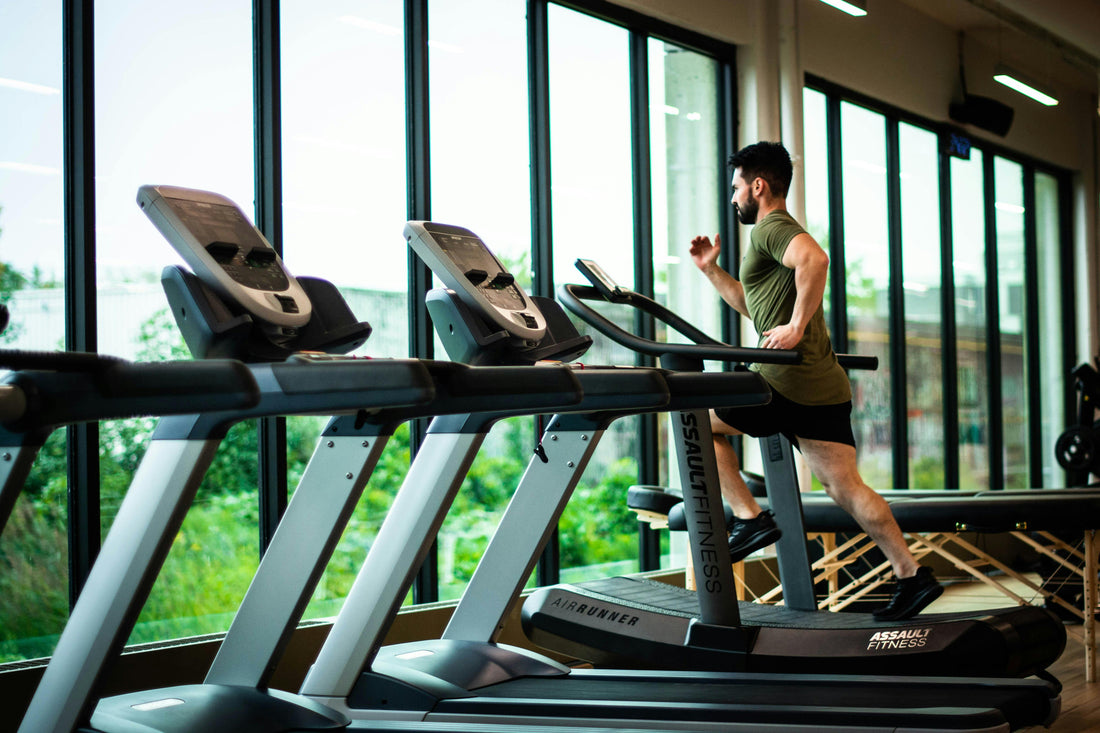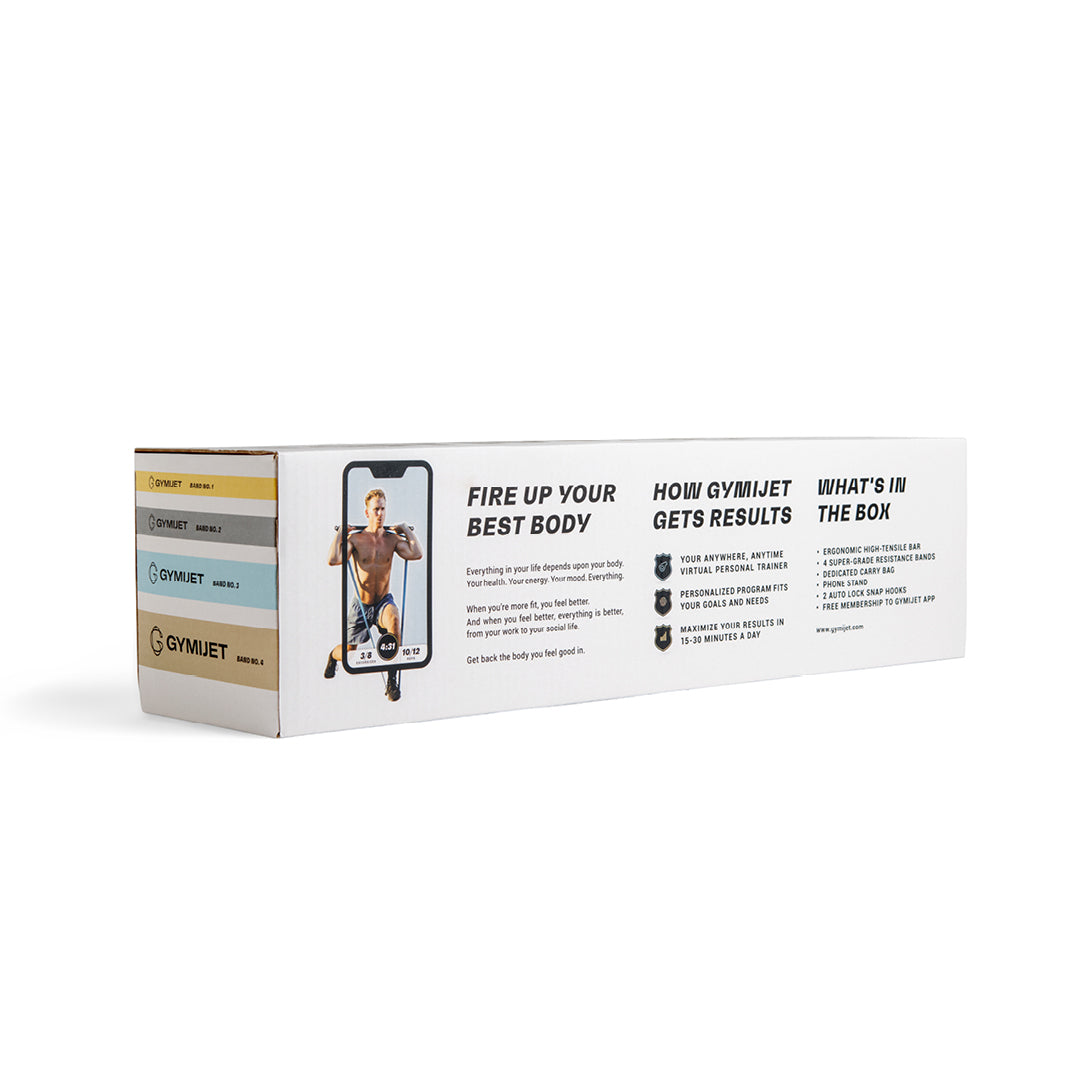
Hotel Room Workouts: How to Train Anywhere
Share
Stepping off a long flight into an unfamiliar hotel room, you're faced with a familiar dilemma: how to maintain your fitness routine when everything about your environment has changed. Your usual gym is thousands of miles away, the hotel fitness center looks like it hasn't been updated since the 1990s, and jet lag has your energy levels all over the place.
The reality is that travel disrupts your schedule and challenges your entire wellness routine. Research indicates that 57% of international business travelers take 1-4 trips annually, with an average stay of 10 days. For frequent travelers, this inconsistency can derail months of progress and leave you feeling out of sync with your body.
Smart hotel room workouts can help you stay strong, energized, and mentally sharp, no matter where your travels take you. The key is learning to work effectively within constraints, turning any small space into your personal training studio.
The Challenge: Why Traditional Fitness Fails on the Road
Travel creates a perfect storm of disruptions that make maintaining fitness routines incredibly difficult. Jet lag alone can reduce exercise performance by disrupting your circadian rhythm, affecting coordination, reaction time, and overall energy levels for days after arrival. Studies show that eastward travel creates more severe symptoms than westward travel, with effects lasting 50% longer.
Hotel fitness facilities, when available, are often inadequately equipped or poorly maintained. Many business hotels have cramped fitness rooms with outdated equipment, limited hours that don't align with your schedule, or crowded conditions during peak times. Budget accommodations often lack fitness facilities, leaving you to rely on alternative solutions.
Space constraints in hotel rooms present another major obstacle. Most standard hotel rooms offer just 200-400 square feet of space, much of which is occupied by furniture that can't be moved. You're left with narrow walkways and small areas near the bed or bathroom, hardly ideal for traditional workout routines that require a significant amount of floor space.
Equipment limitations compound these challenges. Airlines restrict luggage weight and size, making it impractical to bring substantial fitness equipment. Even basic items like yoga mats or resistance bands can be problematic to bring on travels.
Time pressures intensify during business travel. Packed schedules with early meetings, client dinners, and travel days leave minimal windows for exercise. The few free hours you have may be needed for sleep, meals, or preparation, making 60-90 minute gym sessions unrealistic.
Practical Solutions: Building a Travel-Ready Fitness Framework
Master bodyweight fundamentals that work in 6x8 feet of space. Focus on vertical movements and stationary exercises that don't require lateral movement. Push-ups, squats, lunges in place, planks, and wall sits can provide a comprehensive workout in the narrow space between a hotel bed and wall.
Invest in ultra-portable, multi-function equipment: Resistance bands, suspension trainers, and compact tools that weigh under 2 pounds, providing full-body resistance. These items pack easily in carry-on luggage and can turn any anchor point, like door frames and other sturdy furniture, into an efficient makeshift gym.
Develop 15-20 minute high-intensity routines: Short, intense sessions are more suitable for travel schedules and can be more effective than longer, lower-intensity workouts. Circuit training, which combines cardio and strength elements, maximizes results while minimizing time commitment.
Use furniture creatively for resistance and stability. Hotel beds provide elevation for incline push-ups, step-ups, and tricep dips. Chairs can anchor resistance bands, provide support for balance exercises, or add height for elevated movements. Luggage can serve as weights for resistance exercises.
Schedule workouts strategically around travel fatigue: Morning sessions before meetings provide energy and mental clarity. Light stretching or yoga in the evening can improve sleep quality. Avoid intense exercise within 3 hours of bedtime to prevent sleep disruption.
Create backup plans for different scenarios: Have options ready for rooms with varying space constraints, noise considerations (such as neighboring rooms), and varying energy levels. A 5-minute energizing routine for exhausted travel days, a 15-minute standard workout, and a 30-minute comprehensive session when time allows.
How Gymijet Solves This Problem
Gymijet revolutionizes travel fitness by providing professional-grade resistance training in a package that weighs just 6 pounds. Unlike bulky resistance bands that lose tension or suspension trainers that require specific anchor points, Gymijet offers consistent, variable resistance that works in any space larger than a yoga mat.
The AI technology adapts to your travel realities. When the hotel fitness center is closed during your only free hour, or when it's packed with other business travelers during the 6-7 AM rush, Gymijet gives you complete schedule flexibility. Your workout happens in your room, on your timeline—whether that's 5 AM before an early flight or 11 PM after a client dinner.
Most hotel gyms offer only basic cardio equipment like treadmills, leaving you without access to proper strength training tools. Gymijet eliminates this limitation by providing comprehensive resistance training that would normally require a full rack of dumbbells and cable machines. When you're dealing with jet lag and reduced energy, your workout intensity and duration automatically adjust. After long flights, when your body craves movement but feels stiff, gentle activation routines provide relief.
During high-energy business trips, it scales up to provide challenging strength sessions that leave you feeling accomplished rather than drained—no need to wait for equipment or navigate crowded fitness centers. You get professional-grade resistance training in the privacy and convenience of your room, regardless of the hotel's amenities or operating hours.
Eliminates anchor point dependency: Unlike suspension trainers or resistance bands that need doors, hooks, or immovable objects, Gymijet creates its own resistance system. This means you can work out effectively whether you're in a cramped airport hotel room or a spacious business suite.
Adapts to irregular schedules and time zones: The AI learns your patterns and can suggest optimal workout timing based on your travel schedule. It considers factors such as meeting times, time zone changes, and energy levels to recommend the optimal time for exercise during travel days.
Provides consistency across destinations: Whether you're in a luxury hotel in Singapore or a budget accommodation in Cleveland, your workout remains the same. This consistency helps maintain fitness progress and provides a familiar routine that can be grounding during frequent travel.
Expert Tips: Professional Insights for Travel Fitness Success
-
Bodyweight Training Achieves 33% Cardio Improvement in 10 Weeks - Research published in PMC demonstrates that an 11-minute bodyweight training protocol, modeled after the "Five Basic Exercises" plan, significantly improves cardiorespiratory fitness. The biggest gains in aerobic capacity show a 33% improvement, making it ideal for time-constrained business travelers.
-
Exercise Timing Affects Jet Lag Recovery More Than Duration - Sports medicine research on athletes reveals that strategic exercise timing—morning workouts when flying west and afternoon sessions when flying east—can reduce travel fatigue and accelerate circadian rhythm adjustment more effectively than exercise duration or intensity.
-
Social Jet Lag Impairs Exercise Performance by 15-20% - According to the Journal of Applied Physiology, circadian disruption from travel significantly reduces exercise capacity. It prevents training adaptations, emphasizing the importance of maintaining consistent sleep schedules and exposure to light during business trips.
-
Bodyweight Exercises Match Weight Training for Muscle Building - Harvard Health research confirms that bodyweight exercises build muscle "independent of an external load" and delivered improvements in seven out of nine fitness parameters when performed consistently, with the biggest gains in aerobic capacity (33%) and core muscle endurance (11%).
-
Business Class Travel Reduces the Effects of Jet Lag on Performance - Sports chronobiology research has found that better sleep quality during travel significantly reduces jet lag symptoms and maintains exercise capacity, suggesting that comfort during travel directly impacts post-arrival fitness performance.
-
Portable Equipment Provides 40-50% of Traditional Gym Resistance - PMC research on time-efficient training indicates that resistance bands and portable equipment can provide a sufficient stimulus for maintaining strength and even modest gains when programmed correctly. However, conventional equipment remains superior for achieving maximum strength development.
-
High-Intensity Intervals Outperform Steady Cardio for Travel Fitness - A Washington Post analysis of bodyweight HIIT research demonstrates that brief, vigorous bodyweight circuits provide superior cardiovascular and strength benefits compared to longer, moderate-intensity exercise.
FAQs
How can I get an effective workout in a tiny hotel room?
Focus on vertical movements and stationary exercises that can be performed in a 6-foot by 8-foot space. Push-ups, squats, lunges in place, planks, wall sits, and step-ups on luggage or the bed edge can provide a complete workout. The key is intensity and consistency, rather than complex movements that require a lot of space.
What's the most practical portable equipment for frequent business travel?
Resistance bands or loops are the most practical. They weigh under 1 pound, pack flat, and provide variable resistance for full-body workouts. Alternatively, suspension trainers offer a greater variety of exercises but require door anchor points that may not always be available or suitable.
Should I work out when I'm jet-lagged and exhausted?
Light exercise can actually aid in jet lag recovery by helping to adjust the circadian rhythm. Avoid intense workouts for the first 24 to 48 hours after long-haul travel. However, gentle movement, stretching, or light resistance exercises can help boost energy and improve sleep quality.
How do I avoid disturbing neighboring hotel guests during workouts?
Avoid sudden movements, such as jumping, running in place, or dropping weights. Focus on controlled resistance exercises, isometric holds, and smooth transitions between movements. Yoga mats or towels can muffle any remaining noise, and exercising during daytime hours is more considerate.
Is it worth working out for just 10-15 minutes while traveling?
Absolutely. Research shows that even brief, high-intensity sessions provide significant benefits. But ideally, a 15-minute workout helps maintain fitness, boosts energy for meetings, improves mood, and aids in establishing a routine during travel disruptions. Consistency matters more than duration when traveling frequently.
Train Anywhere With Gymijet
Travel doesn't have to derail your fitness routine or leave you feeling sluggish and out of shape. Focusing on space-efficient exercises, portable equipment, and strategic timing can transform any space into your own gym. The key is shifting from traditional gym-dependent thinking to adaptable, travel-ready fitness solutions. Maintaining exercise during travel provides mental clarity, energy, and stress management benefits that directly enhance business performance and travel experiences.
By mastering hotel room workouts, you transform travel from a fitness obstacle into an opportunity to prove your adaptability and commitment to health. Every successful workout in a cramped hotel room builds both physical strength and mental resilience.
Ready to make every hotel room your personal gym? Start Your Portable AI-Powered Fitness Journey with Gymijet Today and discover how 6 pounds of smart equipment can replace an entire gym, no matter where your travels take you.














